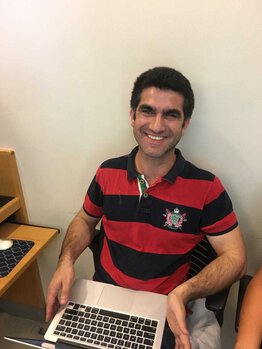Research Description
The ability of cells to respond to extracellular signals is critical for the normal homeostasis of an organism. Disruption of these normal cell signaling pathways underlies numerous pathological conditions including cancer. The research in the O’Bryan laboratory centers on understanding the regulation of these cellular signaling pathways and how alterations to these pathways contribute to cancer. Current projects in the lab are focused on two major areas:
Regulation of RAS GTPases
RAS functions as a critical molecular switch to regulate cellular signaling pathways involved in growth, proliferation, development, differentiation and survival (Fig. 1). Indeed, RAS is the most frequently mutated oncogene in human cancers with 27% of all human tumors possessing mutations in one of the three RAS genes (KRAS, HRAS, or NRAS) and some cancers, such as pancreatic ductal adenocarcinoma (PDACs), exhibiting RAS mutants in >90% of tumors. Importantly, RAS serves as a driver of tumor development, with many cancers “addicted” to the continued presence of oncogenic RAS. Thus, much effort has focused on development of pharmacological inhibitors of RAS for use as therapeutic agents in treatment RAS-mutant cancers. Despite many years of research, there remain no FDA-approved anti-RAS therapeutics in the clinic. Thus, there remains a great unmet need to develop effective strategies for inhibiting RAS. While recent work has resulted in the development of direct RAS inhibitors, these compounds selectively target a very specific mutant form of RAS, namely RAS(G12C), which is present in lung tumors (14%) and colorectal tumors (5%). However, given the overall low frequency of G12C mutations across human tumors (16%), more broadly efficacious RAS inhibitors are needed.
We have taken an unbiased approached to discover novel modalities to inhibit RAS using Monobody technology, developed by our collaborator Dr. Shohei Koide. Using this approach, we have isolated a Monobody, termed NS1, that inhibits RAS by binding the allosteric lobe and preventing self-association/clustering (Fig. 2). As a result, RAS no longer promotes the dimerization and activation of the RAF Ser/Thr kinase, which is the major effector of RAS. NS1 inhibits RAS signaling and oncogenic transformation both in vitro and in animal models for tumorigenesis. These results highlight a new approach to potentially therapeutically inhibit RAS, namely by disrupting RAS self-association. In our continued collaboration with Dr. Koide, we have isolated additional Monobodies that inhibit RAS and are currently working to define their mechanisms of action and biological activity. These studies will help to define new vulnerabilities in RAS that can be exploited in the development of small molecule inhibitors that target this critical oncoprotein.
Intersectin scaffold protein
Intersectin is a multi-domain scaffold protein first implicated in the regulation of clathrin-dependent endocytosis. Indeed, intersectin functions to recruit a number of endocytic accessory proteins to the sites of clathrin-coated pit formation. However, we discovered that intersectin also interacts with and activates a number cellular signaling proteins, including several RAS family GTPases (Fig. 3). Thus, we have focused on defining the cellular signaling pathways regulated by intersectin and determining the importance of these intersectin-regulated pathways in normal and pathological conditions. Indeed, we and others have shown that intersectin is overexpressed in a number of neurodegenerative conditions such as Alzheimer Disease and Down Syndrome and that intersectin may contribute to a number of polyglutamine-expansion diseases such as Huntington’s Disease and Kennedy’s Disease. More recently, we have uncovered a role for intersectin in a pediatric cancer called neuroblastoma. Intersectin is prominently expressed in neuroblastoma tumors and is critical to the tumorigenic properties of neuroblastoma cells. We are currently working to define the mechanism(s) underlying intersectin’s role in neuroblastoma tumorigenesis as well as explore the potential role of this multi-domain scaffold in additional cancers.



